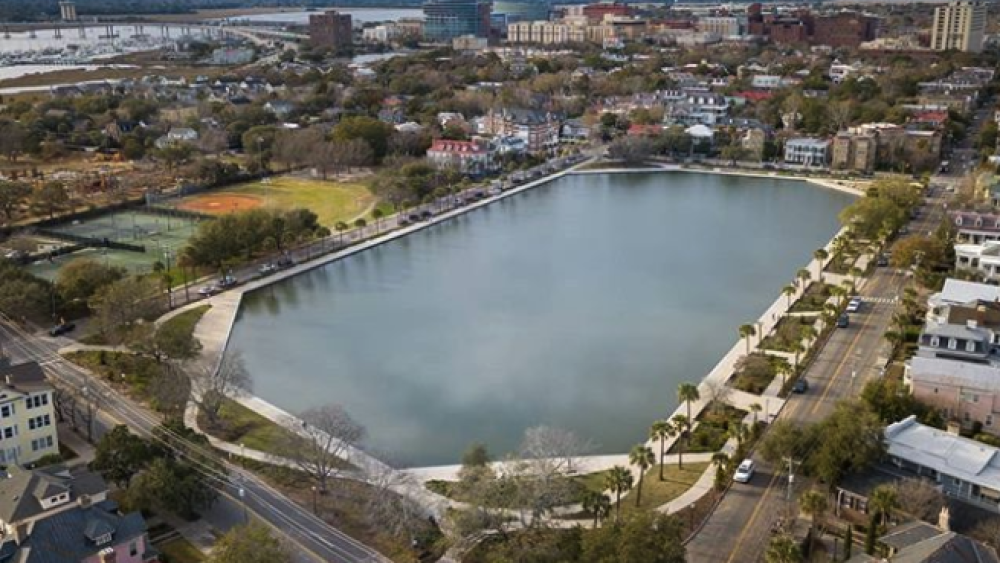When you hear the word “preservation,” what comes to mind? In Charleston, a 349-year-old city experiencing explosive growth, we hear this word used quite often – often surrounding efforts to protect our history from perceived threats like overdevelopment, rising sea levels, + gentrification.
But the conversation around preservation got started long before the debate over offshore drilling heated up; even before the hysteria over Ohioans began. In fact, without centuries of preservation efforts, some of Charleston’s most precious gems wouldn’t ever need saving – because they wouldn’t have ever existed in the first place.

Colonial Lake | Photo by @thelowcountrylens
A big example of that: Colonial Lake Park.
On April 12, 1768 (251 years ago tomorrow), S.C.’s government passed an act calling for the creation of a canal along the upper end of Broad Street leading into the Ashley River, and to permanently reserve the marshes surrounding it as a public common for the people of Charleston. They didn’t mince words – the legislation emphasized this would be a common “forever hereafter” and that any attempt at using the space for any other purpose to be “absolutely null and void.”
At the time, it wasn’t much. For years, the waterway (known then as the Rutledge Street Pond, or, “The Pond”) was used as a mill pond for nearby sawmills. In 1881 – more than 100 years after that act was passed – the lake was officially dubbed Colonial Lake. One year later, a park was developed around it.
Today, another 138 years later, Colonial Lake continues to be one of the peninsula’s most popular parks. A favorite for joggers, dog-walkers, photographers, families, + even fishermen, Colonial Lake brings to life the vision lawmakers had when declaring it a common space in 1768. And with 2,644 photos tagged with #coloniallake on Instagram, I’d venture to say that their vision is appreciated.
While Colonial Lake may be forever secured as a public commons, the need for preservation still persists. In 2016, the Charleston Parks Conservancy completed a $5.9 million makeover of the park, which included important upgrades like an improved water control system, repairs to the 140-year-old seawall, bigger sidewalks to handle increased foot traffic, supplementary benches for seating, + the addition of 20,000+ plants.
Without the local dedication to preservation, Colonial Lake could not be what it is today – and it couldn’t survive, either. On average, volunteers spend 100-360 hours maintaining Colonial Lake each month. And that’s just one park. To learn more about how you can help maintain the city’s beloved public spaces, visit the Charleston Parks Conservancy website here.











